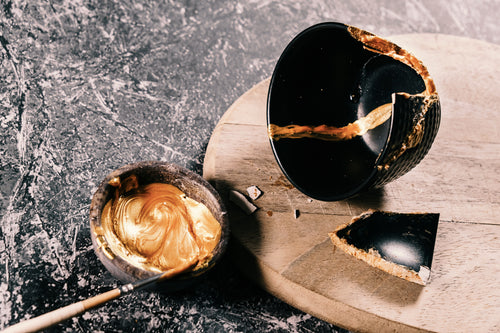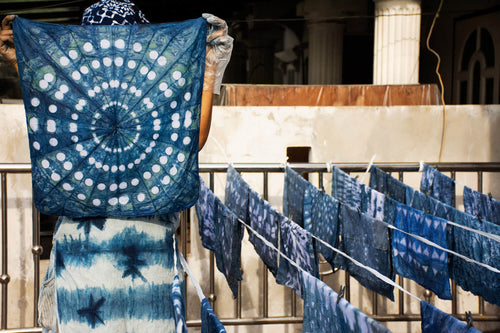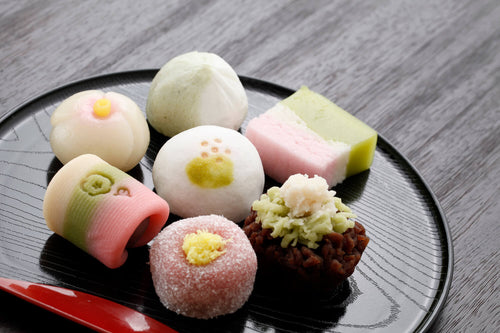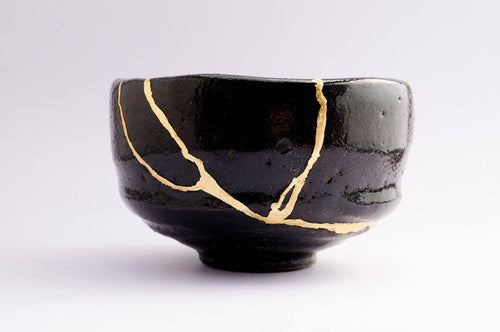Japanese Crafts: The Enduring Spirit of Artisanship

Introduction:
Japanese crafts have long been celebrated for their beauty, intricacy, and the incredible skill required to create them. As a testament to the enduring spirit of artisanship, these crafts continue to captivate audiences worldwide. In this article, we will explore various Japanese crafts, delving into their unique characteristics, rich history, and the mastery of their creation. Join us as we celebrate the captivating world of Japanese craftsmanship.

The Art of Kintsugi - Embracing Imperfection
Kintsugi is a Japanese craft that involves repairing broken ceramics with lacquer and gold, creating a stunning piece that celebrates the beauty of imperfection. This art form is rooted in the philosophy of "wabi-sabi," which embraces the imperfect, impermanent, and incomplete aspects of life. Kintsugi not only highlights the cracks and imperfections of a broken item but also transforms them into a new work of art, symbolizing resilience and the ability to find beauty in adversity.
Historically, Kintsugi can be traced back to the Muromachi period (1336–1573) in Japan. One of the earliest masters of this craft was Hon'ami Kōetsu, a renowned lacquer artist and potter who elevated the art of Kintsugi to a higher level. The process of Kintsugi involves carefully applying layers of urushi lacquer mixed with powdered gold, silver, or platinum to the broken pieces, sealing and binding them together. This requires immense patience and precision, as the lacquer must be applied in thin, even layers and allowed to dry between applications. The skillful application of Kintsugi can transform a damaged ceramic piece into a work of art that is even more beautiful than its original form.

Shibori - The Beauty of Indigo Dyeing
Shibori is a traditional Japanese dyeing technique that involves manipulating fabric through folding, twisting, and binding to create intricate patterns. The art of shibori has been practiced in Japan for centuries and is often associated with the use of indigo dye, which produces a rich and vibrant blue color. The process of shibori is labor-intensive and requires great skill, resulting in stunning, one-of-a-kind textile pieces. Shibori's distinctive patterns and the deep indigo hues have become synonymous with Japanese craftsmanship and continue to enchant audiences around the world.
Historically, Shibori can be traced back to the 8th century in Japan. Some famous shibori artists include Motohiko Katano and Yoshiko Wada. Katano, known as the "indigo magician," was renowned for his intricate shibori patterns and innovative techniques, while Wada is a contemporary artist and researcher who has contributed significantly to the promotion and preservation of shibori worldwide. The process of shibori involves a series of steps, including designing the pattern, preparing the fabric, applying the resist techniques (such as binding, stitching, or folding), and dyeing the fabric. Each step demands careful attention to detail and a deep understanding of the complex interactions between the fabric, dye, and resist methods.

Mokuhanga - The Elegance of Woodblock Printing
Mokuhanga, or Japanese woodblock printing, is an art form that dates back to the 17th century and is known for its vivid colors and intricate designs. Mokuhanga involves carving a design into a wooden block, which is then inked and pressed onto paper or fabric. This craft requires exceptional skill and precision, as even the slightest misalignment can result in a flawed print. Mokuhanga prints have long been admired for their delicate beauty and the masterful technique required to produce them, making them a treasured element of Japanese art.
Historically, some of the most famous mokuhanga artists include Hokusai, Hiroshige, and Utamaro, all of whom contributed significantly to the development and popularization of the art form. Hokusai, for example, is best known for his iconic print "The Great Wave off Kanagawa," which is part of his series "Thirty-six Views of Mount Fuji." The mokuhanga process involves carving the design into separate wooden blocks, one for each color to be used in the print. The artist then applies ink to the blocks and presses them onto the paper or fabric, layering the colors to create the final image. This process requires a deep understanding of color, composition, and the properties of the materials used, as well as a steady hand and keen eye for detail.

Urushi - The Tradition of Japanese Lacquerware
Urushi is the Japanese art of lacquerware, a craft that involves applying multiple layers of lacquer to a wooden or metal object to create a durable, lustrous finish. The art of urushi has been practiced in Japan for thousands of years, with some of the oldest examples dating back to the Jomon period (14,000-300 BCE). Urushi lacquerware is prized for its intricate designs, often incorporating gold or silver leaf and intricate patterns. The time-consuming and painstaking process of creating urushi items results in breathtaking works of art that showcase the exceptional skill and dedication of Japanese artisans.
Historically, some of the most renowned urushi artists include Ogata Kōrin, Hon'ami Kōetsu, and Zeshin Shibata. Ogata Kōrin, a prominent artist from the Edo period, was known for his innovative use of the "maki-e" technique, which involves sprinkling gold or silver powder onto wet lacquer to create intricate designs. The process of creating urushi lacquerware involves applying numerous layers of lacquer, allowing each layer to dry and harden before the next is applied. This requires patience, precision, and a deep understanding of the materials and techniques involved. The final product is a testament to the skill and artistry of the craftsman, as well as a reflection of Japan's rich lacquerware tradition.

Wagashi - The Sweet Art of Japanese Confectionery
Wagashi is the art of Japanese confectionery, which encompasses a wide variety of sweets made from traditional ingredients such as mochi (rice cake), azuki (red bean paste), and kanten (agar). Wagashi is often enjoyed during tea ceremonies or as a complement to green tea, and the elegant designs and delicate flavors of these confections are a reflection of Japanese culture's emphasis on aesthetic beauty and harmony.
Historically, wagashi dates back to the Heian period (794-1185), and one of the most famous wagashi artisans was Toraya Kurokawa, who founded the Toraya confectionery company in the 16th century. The company continues to produce high-quality wagashi to this day. The process of creating wagashi involves carefully shaping and molding the ingredients into intricate forms, often inspired by nature, seasonal motifs, or traditional Japanese aesthetics. The art of wagashi requires not only culinary skill but also a keen sense of design and an appreciation for the subtle beauty found in simplicity.

Japanese Ceramics - A Timeless Art Form
Japanese ceramics are renowned for their beauty, functionality, and the incredible skill required to create them. With a history spanning thousands of years, Japanese pottery and porcelain have evolved into a diverse array of styles, each reflecting the unique character of the region and the individual artist.
From the rustic charm of Bizen ware to the refined elegance of Imari porcelain, Japanese ceramics are a testament to the country's rich artistic heritage and the mastery of its artisans.
Historically, Japanese ceramics date back to the Jomon period (14,000-300 BCE), with some of the earliest examples being simple earthenware pots. Over time, various regional styles and techniques emerged, each with its own distinctive characteristics. Some of the most notable ceramics artists include Kitaoji Rosanjin, a multi-talented artist and gourmet who was deeply involved in the Mingei (folk art) movement, and Tomimoto Kenkichi, who was designated as a Living National Treasure for his contributions to the world of ceramics.
The process of creating Japanese ceramics involves a combination of techniques, such as shaping the clay on a potter's wheel, hand-building, and applying glazes or decorations. Each step requires a deep understanding of the materials and their properties, as well as a steady hand and keen attention to detail. The final product – whether a simple tea bowl or an ornate vase – is a reflection of the artist's skill, dedication, and connection to Japan's enduring ceramic traditions.
Conclusion:
Japanese crafts, with their rich history, cultural significance, and the exceptional skill required to create them, continue to captivate art collectors and enthusiasts worldwide. Whether it's the delicate beauty of Kintsugi or the rustic charm of Bizen ware, the world of Japanese artisanship is a treasure trove of exceptional value, offering unique and timeless pieces that reflect Japan's deep appreciation for beauty, harmony, and mastery. As you explore these captivating art forms, may you develop a deeper understanding and appreciation for the enduring spirit of Japanese craftsmanship.
April Vollmer's "Japanese Woodblock Print Workshop" is an invaluable resource for anyone interested in the art of Mokuhanga. With its detailed explanations and step-by-step instructions, the book demystifies this traditional art form and encourages readers to explore their own creativity. Beautifully illustrated with examples of contemporary and historic prints, this book serves as both an informative guide and a source of inspiration for artists, collectors, and enthusiasts of Japanese art and culture.
Ready to explore our wide range of products? Visit our catalog page now and discover the perfect items for your needs!
